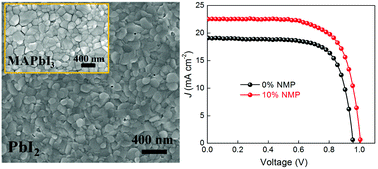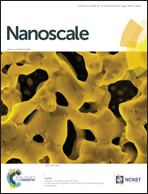Enhanced performance of perovskite solar cells by modulating the Lewis acid–base reaction†
Abstract
The Lewis acid–base reaction between PbI2 and solvent molecules is popular in fabricating PbI2 films by a two-step method for making perovskite solar cells. Here, we control the microstructure of PbI2 films through modulating the Lewis acid–base reaction by adding a small amount of N-methyl pyrrolidone into PbI2/DMF solution. PbI2 films with excellent crystallinity and full coverage are fabricated by spin-coating the mixed solution on the substrate, which leads to high quality perovskite layers with low recombination rate and high efficiency for carrier transfer. As a result, the power conversion efficiency of the best perovskite solar cells increases from 13.3% to 17.5%.


 Please wait while we load your content...
Please wait while we load your content...